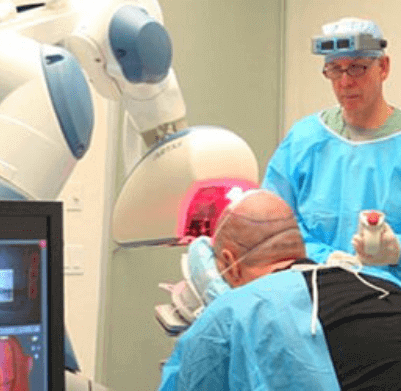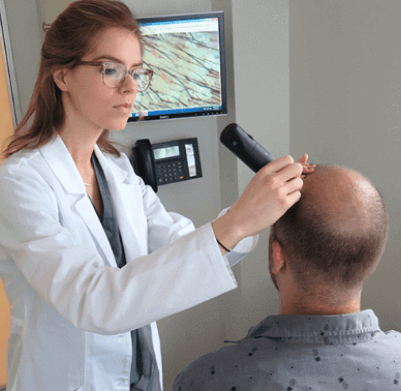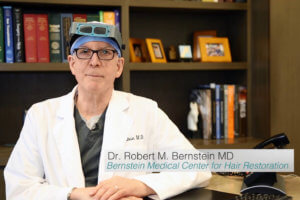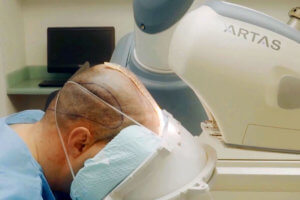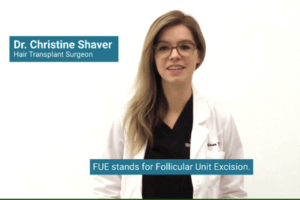#1 Hair Transplant Center in New York – 25+ Years of Proven Results
The Trusted Name in Hair Restoration
We diagnose and treat hair loss in men and women using the most advanced technologies.

Meet Our Renowned Physicians
Christine M. Shaver, MD
Medical Director
- Board-certified Dermatologist
- Mohs Micrographic surgeon
- M.I.T., Yale University
- Alpha Omega Alpha (AOA) honors
- FUT and Robotic FUE
Robert M. Bernstein, MD
Founder
- Clinical Professor of Dermatology at Columbia University
- Pioneer of FUT and Robotic FUE
- Keen aesthetic eye and exceptional surgical skills
The Trusted Name in Hair Restoration
We diagnose and treat hair loss in men and women using the most advanced technologies

Meet Our
Renowned Physicians
Christine M. Shaver, MD
Medical Director
Medical Director
- Board-certified dermatologist
- Mohs micrographic surgeon
- M.I.T., Yale University
- Alpha Omega Alpha (AOA) honors
- FUT and Robotic FUE
Robert M. Bernstein, MD
Founder
Founder
- Pioneering hair transplant surgeon
- Clinical Professor of Dermatology at Columbia University
- Keen aesthetics and exceptional surgical skills
The Trusted Name
in Hair Restoration
in Hair Restoration
We diagnose and treat hair loss in
men and women using the
most advanced technologies
#1 Hair Transplant Center in New York – 25+ Years of Proven Results
Meet Our Renowned Physicians

Christine M. Shaver, MD
Medical Director
Medical Director
- Board-certified dermatologist
- Mohs micrographic surgeon
- M.I.T., Yale University
- Alpha Omega Alpha (AOA) honors
- FUT and Robotic FUE
Robert M. Bernstein, MD
Founder
Founder
- Pioneering hair transplant surgeon
- Clinical Professor of Dermatology at Columbia University
- Keen aesthetics and exceptional surgical skills
Our Hair Restoration Services
Before and After Hair Transplant Photos
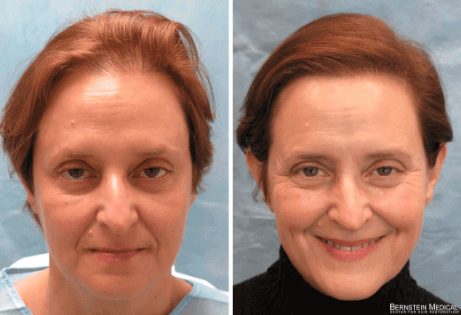
Patient ANJ
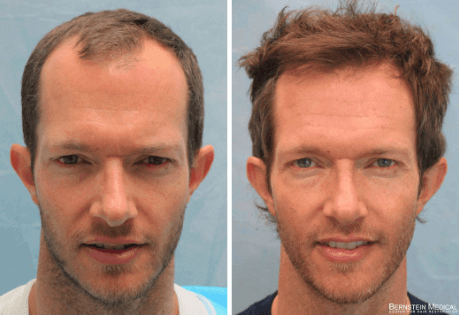
Patient GKL
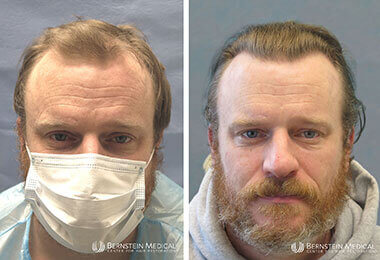
Patient KLD
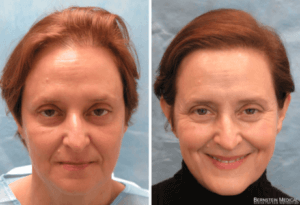
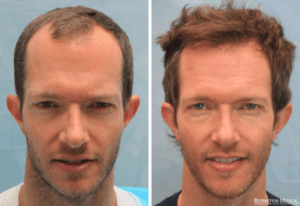
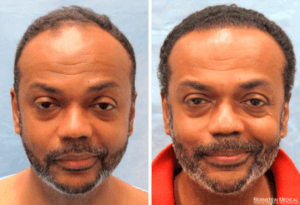
Get in Touch
Ready to Restore Your Confidence?
Take the first step toward natural-looking hair restoration. Request your private consultation with Bernstein Medical Center and discover personalized treatment options.
All fields are mandatory
What our Patients are Saying

Dr. Shaver was wonderful in helping with the approach of hair regrowth. Talking to her made the decision process easy for next steps and understanding what was right to do. I would highly recommend to anyone and thank you Dr. Shaver!
D.A.

From professional hair stylists to plastic surgeons: Anyone who has seen the work Dr. Bernstein has done is very impressed. This is hands down the best place to come to for your treatment. It’s actually true what everyone here is saying!
M.R.

I met Dr. Bernstein and his staff back in 2014. Since this date, I've had two procedures. Dr. Bernstein and his staff are very knowledgeable and they listen. There're a lot of doctors who perform the same procedures but I seek out the best doctors and Dr. Bernstein is at the top of that list.
J.R.
In the News

Top 5 Causes of Hair Loss in Men
READ MORE

Stress and Hair Loss
READ MORE

The Future of Hair Loss
READ MORE

Hair Loss and COVID-19
READ MORE
In the News

Best Scalp Massagers
March 18, 2024

The 7 Best Shower Filters in 2024
May 9th, 2024

Can You Really Reverse Gray Hair?
July 30th, 2024

The 13 Best Hair Growth Serums for Long, Strong Hair
October 6, 2024

Hair shedding and hair loss aren’t the same
October 28, 2024
About us
Bernstein Medical – Center for Hair Restoration is a state-of-the-art hair restoration facility and international hair loss referral center dedicated to the treatment of hair loss in men and women using the most advanced technologies. Founded by world-renowned hair restoration innovator and surgeon Dr. Robert M. Bernstein in 2005, Bernstein Medical is located in midtown Manhattan, New York City.
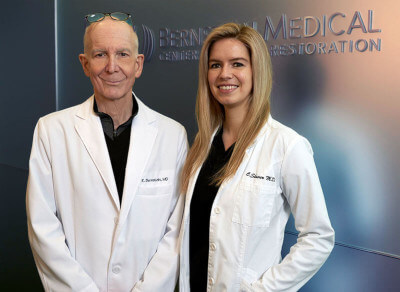
Our Blog
FAQs
Rogaine, the brand name of generic minoxidil, comes in formulations for both men and women. The men’s versions come in a 5% solution and a 5% foam while women’s products are the 5% foam and 2% solution. Of these, the strongest and most effective is the 5% men’s solution. This is due to the inclusion of propylene glycol, which is a vehicle that helps the active ingredient, minoxidil, to more readily penetrate the scalp. As the other products do not contain propylene glycol, they may be slightly less effective.
A hair transplant is a surgical procedure in which hair is moved from the back and/or sides of the scalp, where it is permanent (donor area), to areas that are thinning or bald on the front, top, or crown of the scalp (recipient area). Once transplanted, the hair will continue to grow for a person’s lifetime. At Bernstein Medical we perform the two most effective types of hair restoration procedures, Follicular Unit Transplantation (FUT) and Follicular Unit Extraction (FUE). For the latter, we use new robotic technology.
Follicular Unit Transplantation (FUT) is a hair restoration procedure in which naturally-occurring groups of one to four hairs, called follicular units, are transplanted from the donor area to the recipient area.
In FUT, after the patient’s scalp is numbed, the doctor removes a thin strip of tissue from the back and/or sides of the scalp. The donor strip is then separated into hundreds to thousands of individual follicular units using precise stereo-microscopic dissection techniques. As the follicular unit grafts are being prepared, the doctor makes tiny slits in the scalp (recipient sites), into which the grafts are placed.
If well executed, the use of follicular units ensures that the transplant results will look completely natural and be undetectable. Follicular Unit Transplantation was conceived by Dr. Bernstein and first described in the medical literature in his landmark 1995 publication.
Follicular Unit Extraction (FUE) is a method of extracting, or “harvesting,” follicular units one-by-one directly from the scalp. In FUE, an instrument is used to make small, circular incisions in the skin around follicular units, separating them from the surrounding tissue. The follicular unit is then extracted (pulled) directly from the scalp, leaving a small open hole that heals with a small white mark.
This method of donor harvesting is what differentiates the FUE procedure from Follicular Unit Transplantation (FUT), in which the donor hair is removed in a long strip that is dissected into individual follicular units under a stereo-microscope. The creation of recipient sites and the placing of follicular unit grafts are essentially the same in FUE and FUT procedures.
The FUE technique was conceived by Dr. Ray Woods in the 1990s in Australia and was introduced into the medical literature by Rassman and Bernstein in 2002. In 2011, Dr. Bernstein began performing FUE using robotic technology, and now all FUE hair transplants at Bernstein Medical use the speed, precision, and consistency of the robotic hair transplant system.
The best way to find out is to be evaluated by a board certified dermatologist or plastic surgeon specializing in hair restoration. The answer will depend on the cause of your hair loss, your age, the stability of your donor supply, how extensive your hair loss is, your expectations and a number of other important factors that will be taken into account. Read more about Candidacy for Hair Transplant Surgery.
In general, FUT yields the most donor hair. Therefore, the procedure is best suited for more extensive hair loss and in patients where the main concern is the maximum use of one’s donor supply. The hair is maximized because of the precise nature of stereo-microscopic dissection and the fact that all the hair is harvested from the mid-portion of the permanent zone where the hair is most dense and stable. A limitation of FUT is that it leaves a line scar in the donor area. With normal styling, this is easily covered with hair, but it precludes someone from wearing their hair very short.
FUE is more appropriate for patients who would like to keep their hair very short or who can’t limit strenuous activities in the post-op period. In general, younger patients who need to keep their styling options flexible choose FUE, whereas those who desire the most coverage opt for FUT. Read a detailed comparison of FUT and FUE on our FUE Pros & Cons page.
The answer may be counterintuitive in today’s age of specialization, but the answer is that you should always go to the practice that offers both. To deliver the best care, hair restoration physicians should have expertise in both Follicular Unit Transplantation (FUT) and Follicular Unit Extraction (FUE) techniques and should offer both in their practices. There are at least five good reasons why:
- FUT and FUE are both excellent techniques but have different indications for use
- The same patient may benefit from both procedures
- There is a cross-over set of skills from FUT to FUE
- Practices that offer both procedures are usually more experienced
- Better decision making
Bernstein Medical has been on the forefront of hair restoration since Dr. Bernstein’s pioneering work on follicular unit hair transplants in 1995. As an authority in the treatment of hair loss, we are dedicated to providing the most advanced, highest quality treatments for our patients. The list below provides you with some of the best reasons to visit our state-of-the-art facility in New York City. See the full list of reasons for visiting Bernstein Medical – Center for Hair Restoration here.
Smaller sessions of FUT (less than 800 grafts) can take about 4 hours, while larger ones (2500 grafts or more) can take all day. Sometimes large sessions of FUE are split over two days. The main determinant of the length of the session depends on the number of grafts being transplanted.

